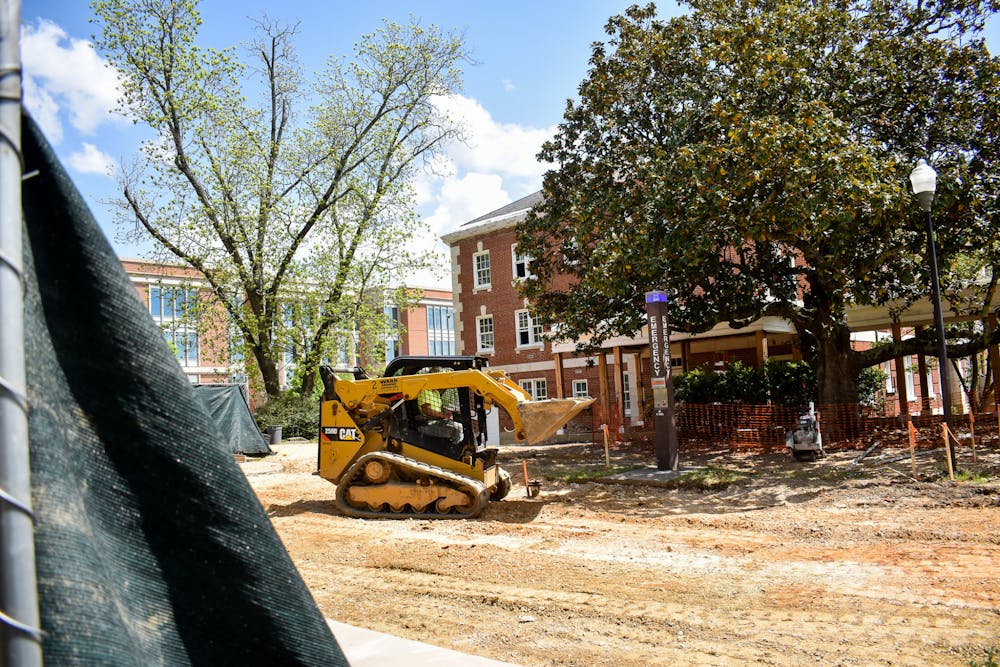Every day, it becomes more and more apparent that our world is drastically changing. The idea of global warming is not new but has recently gained more attention than ever. Logically, if our world is changing, we must change with it.
Auburn University is no stranger to sustainability and its ability to positively impact our everyday lives, but students and members of Auburn’s community might find it difficult to believe in our ability to make positive environmental change when all we can see is the constant, industrialized construction.
How can Auburn University claim to be making sustainable efforts if it seems clear that the University’s main goal is to rapidly expand? Auburn’s Director of the Office of Sustainability Mike Kensler sees these concerns every day.
“I think it’s the more we understand about the way the world works and what our impact is — good, bad or indifferent — we can identify ways we can do things differently, that have a healthier impact, a positive impact, create a healthier culture and all of that sort of thing,” Kensler said.
Kensler stressed that those who feel concerned with the abundance of construction on campus and removing more trees might be surprised to discover these new buildings are actually a positive step in terms of sustianability.
LEED certification, or Leadership, Energy and Environmental Design, is a certification that produces healthier and more efficient buildings that are environmentally and socially responsible.
One of the first parts of the LEED certification process is their tree mitigation policy. Every time a tree is cut down during a construction project, the project has to pay for it.
“We need to continue to improve our tree cover and tree canopy. As the planet continues to warm you know, more and more trees are going to make this place more and more hospitable,” Kensler said.
The Harvard School of Public Health conducted a study that easily explains the positive impact LEED certified buildings can have on the environment. According to Kensler, they found that there was a 26% improvement in cognitive ability in people working in LEED certified buildings.
LEED certified buildings create conditions where people are much healthier overall.
“Those two things make creating LEED buildings a really good idea. People perform better and they’re healthier in those kinds of buildings. And because they’re also more energy efficient, when we prioritize that, we’re also getting them to contribute to our commitment to reduce our carbon footprint,” adds Kensler.
Not only is it the Office of Sustainability’s main goal to promote the health and wellbeing of all students, but, as Kensler explained, it’s the entire university’s goal as well.
LEED certification ensures that buildings are wrapped and insulated better during construction, making them more efficient by decreasing the amount of energy needed to heat and cool them. The older buildings are being recommissioned by making sure things like fans are properly installed. The whole system receives a tune-up.
As an effort to solve this problem, the Office of Sustainability helps to support the efforts of AU Involve and Student Affairs by promoting activities and opportunities. Since energy efficiency is so greatly impacted by human behavior, the Office of Sustainability promotes volunteering with their projects and events.
The Sustainability Picnic takes place every year and is one of their most successful events. Through this event, the Office of Sustainability gives other organizations and units across campus a tabling opportunity like the Campus Rec or Campus Food Pantry.
Not only is it important for students to understand how their efforts can be beneficial, but the city of Auburn can join in as well.
Working and collaborating with the city raises awareness and fights misconceptions about climate change.
There are many examples of practical ways the city and campus are working together to promote a more sustainable Auburn. Here are two:
Auburn’s Office of Sustainability works with the city on stormwater issues Kensler says by asking, “How do we develop the landscape in a way that mimics the way nature does because nature spreads it out, slows it down and lets it sink in.”
They’ve worked to solve this with a plant feature on Mell Concourse that has a stormwater managing feature where the water seeps in rather than flushing down the concourse as well as a partnership at Toomer’s Corner, constructing pervious pavers for the water to seep through.
They’ve also created a dark sky initiative to allow the ability to still view the stars at night by focusing the streetlights down instead of up.
“It’s not like being in Montana where you can see the Milky Way, but you can see the stars here. You can’t in big cities or places like Birmingham because there’s too much light. So, how do we maintain that lovely nighttime experience? Even near the horizon, you look out and see stars, which is incredible. We don’t want to lose that” said Kensler
Taking a deeper dive into the way sustainability improves progress can alleviate anxieties in those who see progress as a danger to our world.
“There’s now this movement in higher education to really make health and wellbeing of the whole community, a cultural priority" Kensler said.
Do you like this story? The Plainsman doesn't accept money from tuition or student fees, and we don't charge a subscription fee. But you can donate to support The Plainsman.





